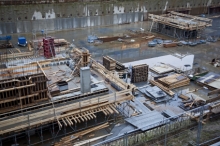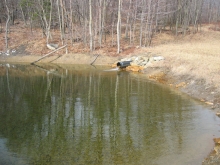The fifth and final article in Buildipedia’s series on the Riverside Museum takes a look at some of the less visible aspects of this spectacular building: the HVAC system, acoustic engineering, and more.
“Complex geometry” is a phrase that successfully sums up Zaha Hadid’s Riverside Museum of Transport and Travel in Glasgow, Scotland – particularly its roof plane. According to Rod Manson, partner and engineer with Buro Happold, “The roof was commonly referred to as the ‘fifth elevation’ on the project.” Its zigzag form, coupled with the vast size of the exhibition space beneath, created several challenges for the engineers tasked with integrating the building systems while ensuring a streamlined look, both inside and out. “It was very important to the architect that the MEP systems be invisible and blend in with the overall building form,” explains Manson. He shared a few of Buro Happold’s clever solutions.











